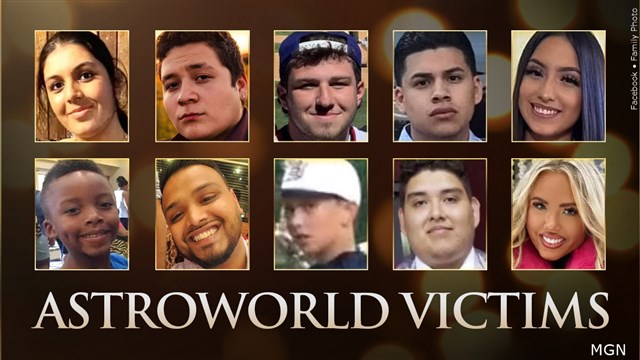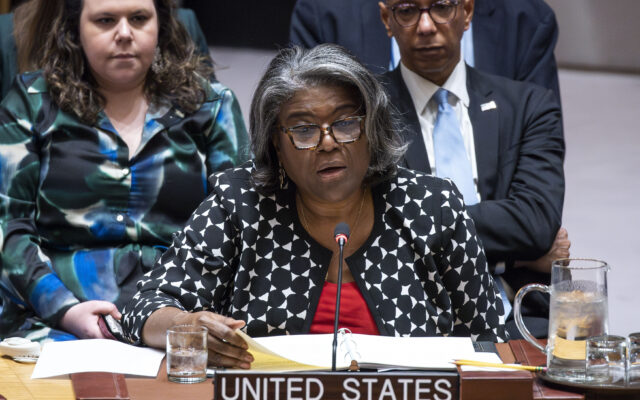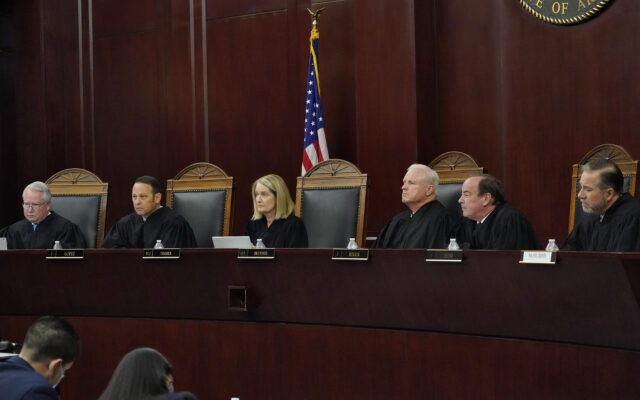Rare conviction of officer in shooting spurs race concerns

By AMY FORLITI Associated Press
MINNEAPOLIS (AP) — After three weeks of testimony, a jury needed little more than a day to convict a black Minneapolis police officer of murder in the fatal shooting of an unarmed white woman who had called 911 to report a possible crime, delivering a guilty verdict that immediately sparked questions about whether race played a role.
Mohamed Noor was also convicted Tuesday of manslaughter in the July 2017 death of Justine Ruszczyk Damond , a 40-year-old dual citizen of the U.S. and Australia whose death bewildered and angered people in both countries.
Noor, 33, testified that he and his partner heard a loud bang on their squad car that startled them, and that he fired “to stop the threat” after he saw a woman appear at his partner’s window raising her arm. Prosecutors questioned whether the bang happened and attacked Noor for not seeing a weapon or Damond’s hands before he fired.
It’s rare for police officers to be convicted after asserting they fired in a life-or-death situation, but some Minnesota community members said they saw it coming for Noor because he is Somali American.
“Officer Noor was going to jail no matter what because he’s a black man who shot a white woman in the state of Minnesota,” said John Thompson, an activist and friend of Philando Castile, a black man who was killed in 2016 by a Latino suburban police officer who was acquitted.
U.S. Rep. Ilhan Omar — who like Noor is Somali American — tweeted Wednesday that the verdict was “an important step towards justice and a victory for all who oppose police brutality.”
But she added: “It cannot be lost, however, that it comes in the wake of acquittals for officers who took the lives of people of color, both in Minnesota and nationwide. We must have the same level of accountability and justice in all officer-involved killings and address violence-based training for police officers.”
Hennepin County Attorney Mike Freeman dismissed the idea that race played a role in the case.
“That simply is not true,” he said. “Race has never been a factor in any of my decisions and never will be. … We look at each case based on the facts and the evidence and the law that’s in front of us. And I will stand by what we have done.”
When asked how Noor’s case was different, Freeman, who has chosen not to charge some white officers in the past, said: “The evidence showed that the officer acted unreasonably.”
Noor, a two-year veteran who testified that he shifted to policing from a career in business because he “always wanted to serve,” was acquitted of the most serious charge of intentional second-degree murder.
He faces up to 15 years on the third-degree murder conviction and nearly five years on the manslaughter conviction, although judges aren’t bound by state sentencing guidelines and can impose much lower sentences.
Noor was handcuffed and taken into custody immediately despite his attorney’s request that he be free on bond pending sentencing June 7. He showed no visible emotion and did not look back at his family, but his wife was crying.
Damond’s father, John Ruszczyk, said the jury’s decision reflected respect for the rule of law and the sanctity of life.
“Justine was killed by a police officer, an agent of the state,” he said. “We believe he was properly charged with a crime.”
Ruszczyk also bitterly criticized police, saying the family believes “the conviction was reached despite the active resistance of a number of Minneapolis police officers, including the head of the union, and either active resistance or gross incompetence” by state investigators early on.
Noor’s attorneys weren’t immediately available for comment.
Minnesota’s third-degree murder charge means causing the death of another through a dangerous act “without regard for human life but without intent to cause” death. Second-degree manslaughter is defined as creating unreasonable risk of causing death or great bodily harm to another through culpable negligence.
Noor and his partner were rolling down the alley behind Damond’s home and checking out the 911 call just before the shooting. Both men testified about a loud noise on the squad car.
But while Noor described a decision to fire based on what he felt was a threat, Harrity testified that he hadn’t finished analyzing the situation. When prosecutor Amy Sweasy asked Harrity whether that meant it would have been premature for him to fire, he agreed.
The death of Damond, a life coach who was engaged to be married a month after the shooting, cost Minneapolis’ police chief her job and contributed to the electoral defeat of the city’s mayor a few months later.
Neither officer had a body camera running when Damond was shot. Both switched on their cameras in time to capture the aftermath, which included their attempts to save Damond with CPR. But Noor’s bullet hit her in a key abdominal artery, and a medical examiner testified she lost so much blood so quickly that even faster medical care might not have saved her.
Prosecutors sought to raise questions about the way police and state investigators handled the aftermath. They played excerpts from body cameras worn by responding officers that revealed many officers turning them on and off at will; one officer could be heard on his camera at one point telling Noor to “keep your mouth shut until you have to say anything to anybody.” They also highlighted the lack of forensic evidence proving Damond touched the squad car.
But the case still came down to jurors’ assessment of whether Noor was justified in shooting, and they had only the officers’ testimony for a picture of the key moments. During his closing argument Monday, defense attorney Thomas Plunkett told jurors all that mattered was the “precise moment” in which Noor fired his gun and that they needed to consider whether Noor acted as a reasonable officer would act in the same circumstances. Sweasy argued the shooting was not justified.
The jury included 10 men and two women. Six of the jurors, including the two women, were people of color.
Noor is among the many Somali immigrants who settled in Minnesota after coming to America due to civil war in his home country. His hiring was celebrated by city leaders eager to diversify the police force in a city rich in immigrants.
Noor was fired after he was charged.
___
Associated Press writer Jeff Baenen contributed to this report.
___
Follow Amy Forliti on Twitter: http://www.twitter.com/amyforliti
___
Check out the AP’s complete coverage of Mohamed Noor’s trial.
Click here to LIKE Southern Minnesota News on Facebook.
Click here to FOLLOW @SouthernMNnews on Twitter.
(Copyright © 2019 the Associated Press. All rights reserved. This material may not be published, broadcast, rewritten or redistributed.)









